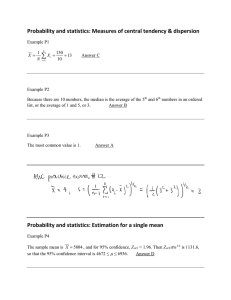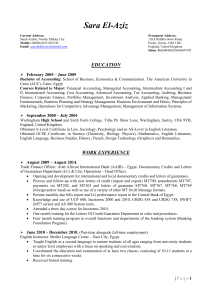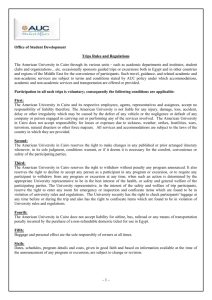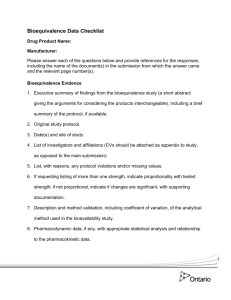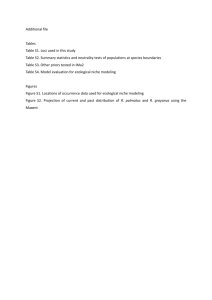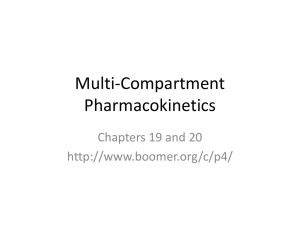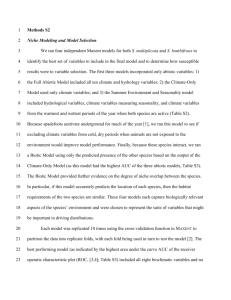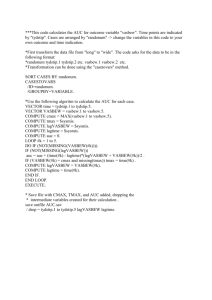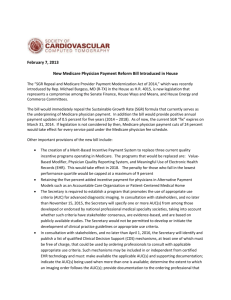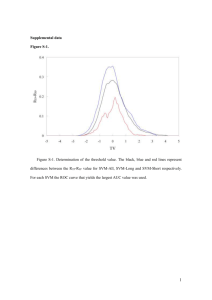2.4 Model development and evaluation The Maximum Entropy
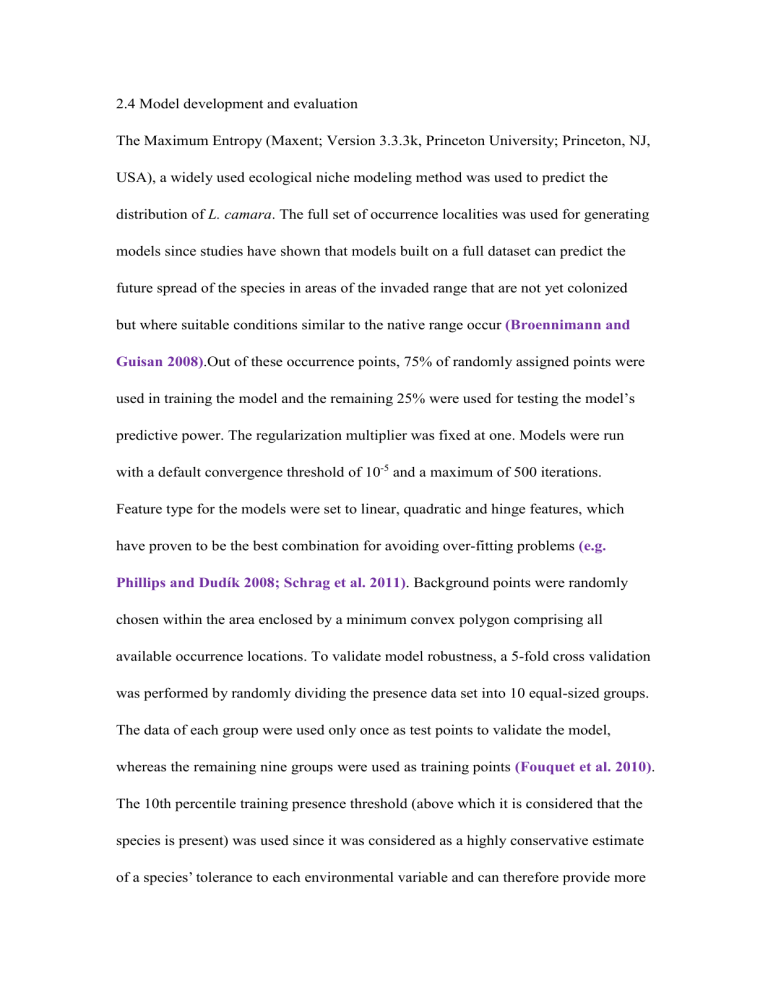
2.4 Model development and evaluation
The Maximum Entropy (Maxent; Version 3.3.3k, Princeton University; Princeton, NJ,
USA), a widely used ecological niche modeling method was used to predict the distribution of L. camara . The full set of occurrence localities was used for generating models since studies have shown that models built on a full dataset can predict the future spread of the species in areas of the invaded range that are not yet colonized but where suitable conditions similar to the native range occur (Broennimann and
Guisan 2008) .Out of these occurrence points, 75% of randomly assigned points were used in training the model and the remaining 25% were used for testing the model’s predictive power. The regularization multiplier was fixed at one. Models were run with a default convergence threshold of 10 -5 and a maximum of 500 iterations.
Feature type for the models were set to linear, quadratic and hinge features, which have proven to be the best combination for avoiding over-fitting problems (e.g.
Phillips and Dudík 2008; Schrag et al. 2011)
. Background points were randomly chosen within the area enclosed by a minimum convex polygon comprising all available occurrence locations. To validate model robustness, a 5-fold cross validation was performed by randomly dividing the presence data set into 10 equal-sized groups.
The data of each group were used only once as test points to validate the model, whereas the remaining nine groups were used as training points (Fouquet et al. 2010) .
The 10th percentile training presence threshold (above which it is considered that the species is present) was used since it was considered as a highly conservative estimate of a species’ tolerance to each environmental variable and can therefore provide more
ecologically significant results (Svenning et al. 2008; Peterson et al. 2011) .
The logistic output format with suitability values ranging from 0 (unsuitable) to 1 (optimal) was used (Phillips and Dudík 2008) . The jackknife procedure was implemented to measure the relative importance of the environmental predictors and the ability to correctly predict new ranges in the model. The area under the receiver operating characteristic curve (AUC), a threshold independent measure of predictive accuracy, was used to assesses model discriminatory power by comparing model sensitivity (i.e. true positives) against model specificity (i.e. false positives) from a set of test data
(Fielding and Bell 1997) . The True Skill Statistic (TSS) and Cohen's Kappa statistic, ranging from -1 to +1, were also calculated to allow a more robust assessment of model performance and to validate model responses (Vorsino et al. 2014) . Testing the AUC values for species distribution models against a null-distribution of AUC values may help to determine the significance of these models. For this, null models for testing significance of MaxEnt models were performed as described by Raes and ter Steege (2007). For each model based on the distribution of L. camara , a series of
99 times as many records as the actual number of presence points was generated without replacement from the geographical areas for which the L. camara distributions were modeled. Maxent models relating the null-distributions to the environmental layers were then created. Average AUC as well as the 95% confidence interval upper limit was calculated from the randomly generated model and was compared with the AUC of the models generated using the actual distribution data.
Significantly higher AUC of the L. camara models than the AUC of randomly
generated models would indicate that the species distribution model performs significantly better than expected by chance (Raes and ter Steege 2007) .
